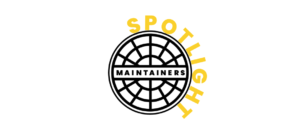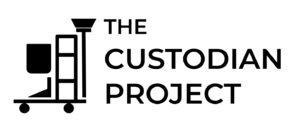Maintainers Spotlight: The Custodian Project, an interview with Evalynn Fae Taganna Romano
Maintainers Spotlight: The Custodian Project, an interview with Evalynn Fae Taganna Romano
By Madison Snider
I first met Evalynn Fae Taganna Romano while recruiting participants for my dissertation research. I wanted to know how increasingly datafied built environments were impacting those workers tasked with their maintenance and repair. What did it mean for window-washers, custodians, and facilities maintainers, that their workspaces were dotted with more and more “smart” devices? In what ways was this new paradigm of buildings and grounds as sites for data extraction implicating their work practices? Somewhat unsurprisingly, these workers were not integrated into the design process for the spaces they would eventually clean, repair, and maintain. In fact, not infrequently they were only made aware of new technology after it broke and interrupted “business as usual.” It became clear early into the recruiting process that custodians were some of the most overlooked groups in campus infrastructure design and that this was part of a larger phenomenon of invisibilizing care work. Underneath my particular questions about datafied built environments lies a bigger and more fundamental question, and one that Evalynn has been asking for years: How do we care for those who care for us?
For Evalynn, care is the air she breathes. She is the proud daughter of custodians at the University of Washington (UW) and works as a grief counselor helping families cope with loss. For her Master of Public Health thesis, she led a community-based participatory project on Black, Indigenous, and people of color (BIPOC) youth mobility justice. In the midst of all this, Evalynn founded and continues to lead The Custodian Project. I got to sit down with her at a bakery on the south end of the UW Seattle campus to discuss the project and her vision for a world that appreciates and honors care workers.
What is The Custodian Project?
The Custodian Project’s inception was a response to COVID-19 policies and discourses surrounding the importance of essential workers. Despite the long-overdue visibility given to the workers that sustain our collective and individual well-being, custodians were still largely overlooked, Evalynn shared.
“The interesting part is that custodians are labeled as essential workers, and yet did not get the same types of privileges that certain types of essential workers got. So I am thinking about hazard pay, like grocery workers got eventually as well as firefighters and police. So not only is there ‘essential worker’ versus ‘non essential workers’, there’s a type of hierarchy that people don’t talk about.”
Evalynn’s curiosity and frustration in watching her mother, a custodian in the Art Building at the UW, and her late father’s custodial coworkers in the Health Sciences Building, return to work despite mounting health and safety concerns prompted her to act. She started small. With a birthday on the horizon, Evalynn began a fundraising effort with her personal networks to bring breakfast to her mother’s colleagues to show appreciation for their work. Her fundraising goals were far exceeded allowing her to deliver breakfasts to her father’s colleagues as well, and eventually all custodians on campus (nearly 500 workers). While Evalynn calls the work small, it holds a lot of significance for both her and the custodians she has served:
“I feel like the identity of being a daughter of custodians, there’s an emotional aspect to this work in thinking about how I can honor my mom, who’s been a custodian for over 33 years now? My father passed away but was a custodian for 25 years. I am a grief counselor. How can you honor people who have died? This is one way that I honor my Dad.”
Breakfast deliveries and policy change
Caring for and appreciating those who maintain the cleanliness and safety of our shared built environments was just the beginning. The Custodian Project blossomed into a multi-layered effort to give appreciation for custodians, increase the visibility of this work, and pressure leaders of the university and local government to include custodians in priority groups for vaccines and hazard pay programs. Evalynn’s efforts are exemplary of how community-based participatory methods can lead to impact across these scales while remaining rooted in the interests and needs of the community of focus. Starting “small” is critical to the trust-building process this work requires. Evalynn continues to show up for custodians at UW. Showing up includes listening. After hearing about shared experiences of aches and pains, Evalynn partnered with a local running shop in Seattle to provide supportive shoes for custodians. The project remains nimble and responsive to custodians’ needs.
When COVID-19 vaccines rollouts began, custodians were missing from the list of essential workers eligible. The Custodian Project sprung into action calling for policy changes directly from Washington State Governor Jay Inslee and Evalynn collaborated with UW Building Services to address vaccine hesitancy and support custodians who had questions about eligibility or needed help registering for vaccine appointments. Many custodians are BIPOC and/or part of the immigrant and refugee community. This posed additional challenges in vaccine procurement – a challenge Evalynn immediately recognized from her vantage point as a daughter of custodians and a community organizer with BIPOC, immigrant, and refugee communities in Seattle. Activating these networks, Evalynn was able to support at least 50 custodians and their family members get vaccinated.
Making Care Visible through Photovoice
The project is not just about custodians, but their families as well. In order to make visible the impacts working during a pandemic had on custodians, their families, and wider community, The Custodian Project features a photovoice traveling exhibition. Photovoice emerged as a community-based participatory method that could meet custodians and their needs. This methodological choice was reflective of the community, Evalynn shares:
“For several cultures, storytelling is so important to life. I’m always thinking of ways to include what would feel natural for people to get into the space. Photovoice is a photography-based storytelling method, oftentimes used to advocate for change, and is often used to bring information from people doing the work or people in the community to people with power and privilege.”
The photographers are 16 custodians who identify as an immigrant, refugee, or BIPOC. Through photographs, they capture the experience of being an essential worker and the health impacts of their workplace, neighborhoods, and homes. One year later, Evalynn got connected with UW’s Jacob Lawrence Gallery. In a full-circle moment, The Custodian Project photovoice series “(in)Visibility” premiered in the very building in which Evalynn’s mother works as a custodian. Since its debut, the exhibit has popped up across campus and other regional galleries and spaces as well as a photo essay published online by YES! Magazine.
Custodial work is maintenance and care work
What is it that Evalynn wishes more people knew about custodians? Custodial work is care work.
“People might not realize that many custodians actually really care for the people who use the spaces that they clean. A lot of the custodians see people on this campus as family. They see students like their children and don’t want them to get sick. And I think a lot of that is due to the collective cultures that perhaps many of the custodians come from. It’s not just about them, but it’s about other people. And so I think a lot of people might not realize that and I think that just comes very natural for me, because I have a lot of aunties and uncles who are custodians at UW that aren’t biologically related to me, but they have taken me in as their daughter or niece or something like that. People might not realize that, even like a simple hello, or just like, acknowledging their presence can mean a lot.”
Caring for those who care for us is one of the most powerful ways we can build community during uncertain and difficult times. The Custodian Project is a node of a much larger constellation of community organizing making visible invisibilized workers we all rely upon. Domestic workers, home health aides, therapists, teachers, repair technicians, and delivery drivers. The questions The Custodian Project asks are ones we can ask across sectors and scale: Who cares for us? How can we show our appreciation for this work? How can we reciprocate this care?
As we finished up our discussion, Evalynn gathered her things and lamented her choice to eat a late breakfast as she was on her way to a barbecue with UW custodians. “They will make me eat something. It won’t be a choice,” she joked. Afterward she plans to visit custodians across campus with personal invites to a community event hosted at the Othello-UW Commons in Seattle’s Rainier Valley neighborhood. She continues to show up for custodians who continue to show up for all of us.
Support The Custodian Project
Thank you so much to Madison Snider (madison.snider@
You are encouraged to support The Custodian Project by checking out their website, and more so, you are encouraged to support their upcoming fundraising drive in honor of National Custodian Day on October 2nd. The Custodian Project is aiming to raise $3,000 for hot meal delivery to custodians on this date. For the latest news and updates on The Custodian Project, follow them on Instagram, Facebook, and Twitter.
About The Maintainers Spotlight Blog Posts
In order to increase the visibility of maintenance efforts across all disciplines, The Maintainers invites you to share your reflections and relationship to maintenance by submitting a blog post to spotlight a Maintainer or maintenance effort in your community. If you would like to participate in the series, check out our Maintainers Spotlight overview page. Please reach out to Liliana Coelho, our community outreach & events coordinator with questions ([email protected]).

